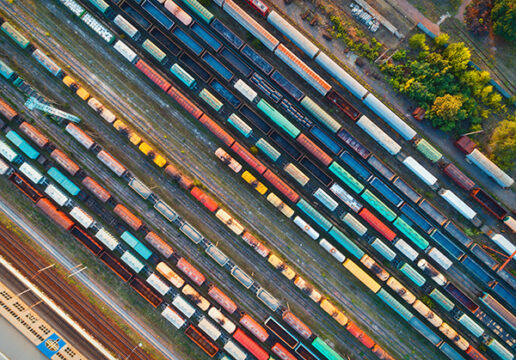
No matter how well you appreciated the value of a well-functioning supply chain a few months ago, you probably have a far greater appreciation now.
Two months after most of the world’s largest economies started slowing down in response to the COVID-19 pandemic, most consumer goods are still available. (Well, except maybe for hand sanitizer.) Tap water still flows, lights still come on, and the Internet is as fast, free and indispensable as ever. None of that would be possible if vital supplies couldn’t travel from Point A to Point B.
The Association of American Railroads reports this sobering statistic: U.S. rail carloads in April 2020 were off 25.2% year over year from April 2019. Yet if you flip that statistic around, it’s actually pretty amazing. Despite the gut-punch of a global pandemic that’s shuttered millions of American businesses, three out of every four trainloads still manage to get where they need to be.
We have an extraordinarily robust and resilient supply chain. Let’s take a step back and salute the people who are out there making it happen.
Crucial roles of well-managed supply chains
More than a decade before anyone had heard of COVID-19, the Council of Supply Chain Management Professionals (CSCMP) published an article on The Importance of Supply Chain Management. While part of the article dealt with the undeniable benefits of supply chain management for individual businesses, the section on “Societal Roles of SCM” is especially powerful reading in light of our current situation.
It claimed three essential benefits of well-managed supply chains:
- Ensuring human survival. Supply chains deliver basic necessities such as food, water and medicine. Plus, the energy supply chain delivers energy to homes and businesses for light, heat, refrigeration and air conditioning, protecting us from the climate extremes that threatened human life for millennia.
- Improving quality of life. Supply chain infrastructure is our foundation for economic growth and job creation. Our modern highway systems, railroad networks, seaports and airports help consumers afford more products and raise everyone’s standard of living—even when they can’t leave their homes.
- Protecting cultural freedom and development. The same infrastructure that allows almost unlimited consumer choice also allows the military mobility that provides maximum security to soldiers and ordinary citizens.
And let’s not forget the vital role of our supply chain during humanitarian crises, making massive response possible in the wake of catastrophe. In the first two weeks after Hurricane Katrina, for instance, the Red Cross managed to provide shelter for 160,000 evacuees and deliver more than 7.5 million hot meals. That’s our supply chain in action when it’s needed most.
Automation and dedication
One reason our supply chain has performed so well during this crisis is that players at every level have made appropriate investments in automation. While digital transformation has affected every link in the global supply chain, its impact is especially profound in Dangerous Goods transport.
Consider one example: the shipper whose warehouse workers remain onsite while their managers with hazmat expertise work from home. Without automation connecting them, critical shipments containing hazmat—such as key chemicals or battery-powered technology—might fall behind schedule or be shipped by non-compliant or less safe means.
But a common, cloud-based, remotely accessible platform with integrated Dangerous Goods functionality lets the manager and the warehouse worker view the same information at the same time, so both have full confidence that the shipment can be made in full compliance.
Advanced technology—along with the incredible dedication of millions of professionals—makes today’s supply chain a pillar of strength when we need it most.
Make sure your shipments are safe and in complete compliance with a full line of solutions from Labelmaster—a full-service provider of goods and services for hazardous materials and Dangerous Goods professionals, shippers, transport operators and EH&S providers.


